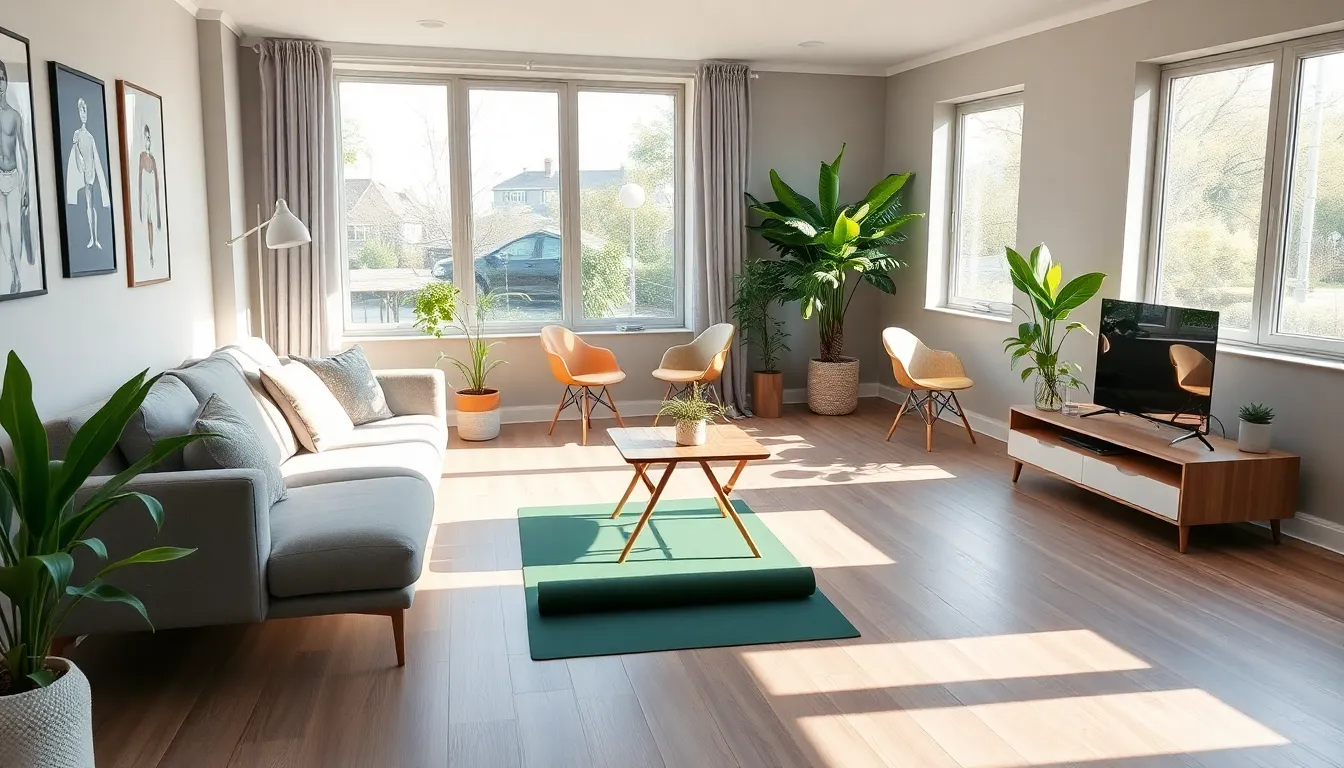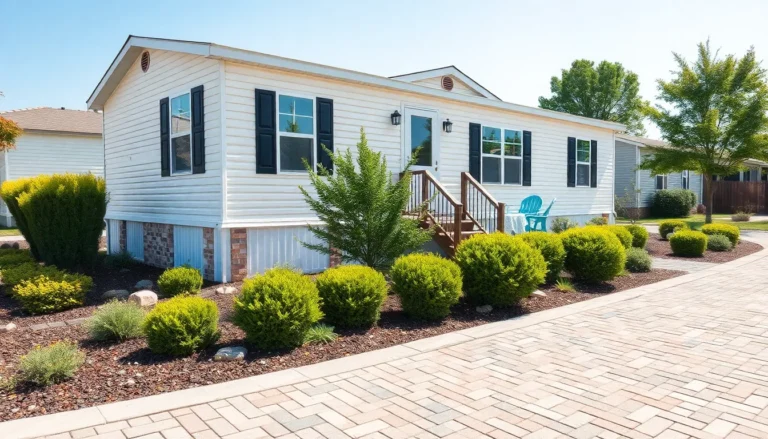Table of Contents
ToggleIn a world where space is a luxury, multifunctional layouts are the superheroes of home design. They swoop in to save the day, transforming cramped quarters into versatile havens that cater to every need. Imagine a living room that doubles as a yoga studio or a kitchen that moonlights as a cozy dining nook. These layouts not only maximize space but also spark creativity, making every square foot work harder than a barista on Monday morning.
Overview of Multifunctional Layouts
Multifunctional layouts represent innovative solutions in home design, allowing for flexible use of space. These designs cater to various needs, ensuring each room serves multiple purposes. A living room can easily transform into a workspace, accommodating both leisure and productivity.
Kitchens serve not only for cooking but also as social hubs, where family and friends gather. They often blend seamlessly with dining areas, fostering a communal atmosphere. In smaller homes, multifunctional layouts maximize every square foot, creating an illusion of spaciousness.
This design principle leverages furniture that adapts to different functions. For instance, a sofa bed provides comfortable seating by day and converts to a bed by night. Movable partitions or folding tables further enhance versatility, allowing quick transitions between activities.
By encouraging creativity, multifunctional layouts promote a personalized space that reflects individual lifestyles. They introduce elements that facilitate ease of movement, such as open-plan designs, which eliminate barriers between rooms. Designers capitalize on natural light and color palettes to create a welcoming atmosphere.
In contemporary living, these layouts manifest trends like co-working spaces within residential areas. Multi-use spaces retain value in urban environments where real estate comes at a premium. Implementing multifunctional layouts not only addresses spatial constraints but also enriches the overall living experience.
Benefits of Multifunctional Layouts


Multifunctional layouts offer several advantages that enhance living spaces.
Space Optimization
Space optimization is a primary benefit of multifunctional layouts. Each square foot in a home gets utilized effectively, accommodating various activities without clutter. For instance, a living room can serve as a workout area, allowing owners to invest in versatile furnishings such as storage ottomans and foldable tables. These layouts create room for additional furniture that suits multiple uses, maximizing both utility and aesthetics. Homeowners often maximize vertical and horizontal space through innovative designs, making areas feel larger. Integrating multifunctional elements increases storage and enhances organization, which is crucial in smaller living spaces. Moving furniture around quickly also contributes to a more dynamic environment, adapting to daily routines seamlessly.
Flexibility and Adaptability
Flexibility and adaptability are inherent traits of multifunctional layouts. These designs accommodate shifting needs effortlessly. For example, a guest bedroom can double as a home office, ensuring rooms serve dual purposes efficiently. Providing occupants with the ability to change layouts encourages creativity and personal expression. Utilizing modular furniture allows residents to reconfigure spaces based on activities, whether entertaining guests or studying. Open-plan designs further enhance adaptability by facilitating movement and maximizing natural light, creating an inviting atmosphere. Transforming spaces according to season changes also presents a fresh living experience, appealing to those seeking an evolving environment.
Design Principles for Multifunctional Layouts
Creating multifunctional layouts requires thoughtful design principles. These principles ensure optimal space utilization while maintaining aesthetics.
Zoning and Flow
Zoning defines specific areas for various activities within a multifunctional layout. It establishes distinct spaces for work, relaxation, and socializing, enhancing user experience. Clear pathways between zones improve flow, promoting natural movement throughout the area. Designers often use visual cues, like area rugs or color changes, to delineate spaces without creating physical barriers. Effective zoning fosters focus in workspaces and comfort in living areas. Flexibility lies at the heart of this approach, allowing areas to adapt based on changing needs.
Multifunctional Furniture
Multifunctional furniture serves as a cornerstone of effective multifunctional layouts. These pieces maximize utility in limited spaces. For instance, a sofa bed easily converts a living area into a guest room. Storage ottomans combine seating and storage, reducing clutter while offering practicality. Foldable tables expand dining options without taking up permanent space. Versatile designs not only enhance functionality but also promote visual harmony. By prioritizing multifunctional furniture, homeowners achieve seamless transitions between various activities, optimizing every square foot.
Examples of Multifunctional Layouts
Multifunctional layouts serve various purposes in both residential and commercial settings. They maximize utility and optimize spatial use in creative ways.
Residential Spaces
Living rooms can easily become cozy home theaters. By incorporating modular furniture, like sectional sofas that transform into beds, homeowners enhance functionality. Dining areas might also feature extendable tables, accommodating different group sizes. Bedrooms often include desks, ensuring they serve as comfortable workspaces. The inclusion of built-in storage under beds or benches provides a seamless way to manage clutter. These layouts not only facilitate multiple activities but also reflect individual lifestyles and preferences.
Commercial Environments
Office spaces showcase flexibility through open-plan designs. Collaborative zones integrate lounge areas with meeting rooms, promoting teamwork and communication. Cafés within office buildings act as social hubs, balancing work with relaxation. Retail setups often display products while offering interactive experiences, merging shopping with engagement. Event spaces utilize movable partitions, adapting to various occasions seamlessly. These adaptable designs enable businesses to optimize limited square footage effectively, ensuring they meet changing demands while remaining functional.




